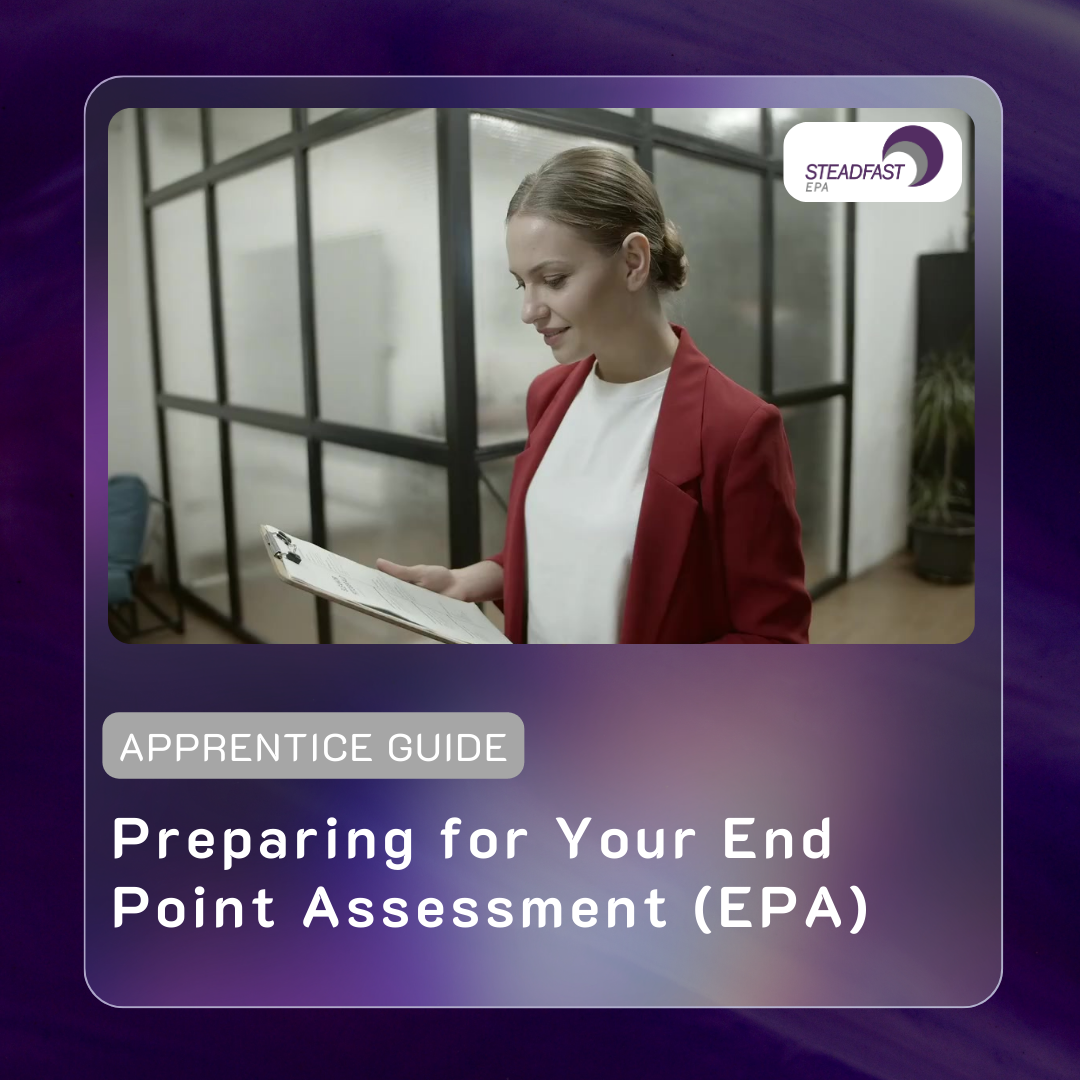Congratulations on completing the Gateway! With the on-programme portion of your apprenticeship behind you, it’s time to focus on your End Point Assessment (EPA). While the EPA may seem challenging, thorough preparation will enhance your confidence and readiness.
Our Steadfast EPA Apprentice Guide provides essential tips to help you effectively prepare for your EPA, ensuring a smooth and positive assessment experience.
Understanding the EPA assessment methods
Each apprenticeship standard has a unique assessment plan that incorporates various EPA methods such as:
- Presentations
- Project reports
- Multiple-choice tests
- Professional discussions
- Q&A sessions
- Interviews
These diverse assessment methods are designed to evaluate your knowledge, skills, and behaviours. Make sure you understand which assessment methods will be utilised in your End Point Assessment (EPA) and familiarise yourself with the process, format, and expectations of each method. This information is detailed in the guidance provided by your EPAO (End Point Assessment Organisation). This can be accessed through our online portal.
Understand how you will be assessed and graded.
The assessment criteria are outlined in the standard’s assessment plan, typically categorised into knowledge, skills, and behaviours. These criteria set out what you need to demonstrate to achieve a pass and a distinction.
Tip: Print out the assessment criteria (available on our online portal) and use them as a checklist to guide your EPA preparation.
Demonstrating How You Meet the Assessment Criteria
Once you are familiar with the assessment criteria, reflect on instances where you have demonstrated each of the KSBs in your role. Practice articulating these examples with a colleague, friend, or your training provider.
For example, if a criterion states, “Can adapt to change and solve problems,” consider a time when something did not go as planned and describe:
- What happened
- How you reacted
- Why you chose that solution
- The outcome
Independent end point assessors (IEPAs) are there to guide you through your Assessment and decide the grade that you are awarded based on the grading matrix set out in the Assessment Plan
Your IEPA’s role is to grade your performance fairly and consistently, not to catch you out and they must remain impartial.
The Value of Mock Assessments
Practising the process, for example, in a mock assessment that simulates actual EPA conditions can be highly beneficial. Training providers often facilitate mock EPAs, so discuss arranging one with your coach or tutor.
For speaking assessments, such as interviews and presentations, recording and reviewing your mock assessment can help identify areas for improvement.
Seek Clarification When Needed
These tips should assist you in preparing for your EPA. If you have questions that are not addressed in your EPAO’s materials, speak to your training provider.
With thorough preparation and a clear understanding of the EPA process, you will be well-equipped to succeed. Best of luck on your assessment journey!

Leave a Reply